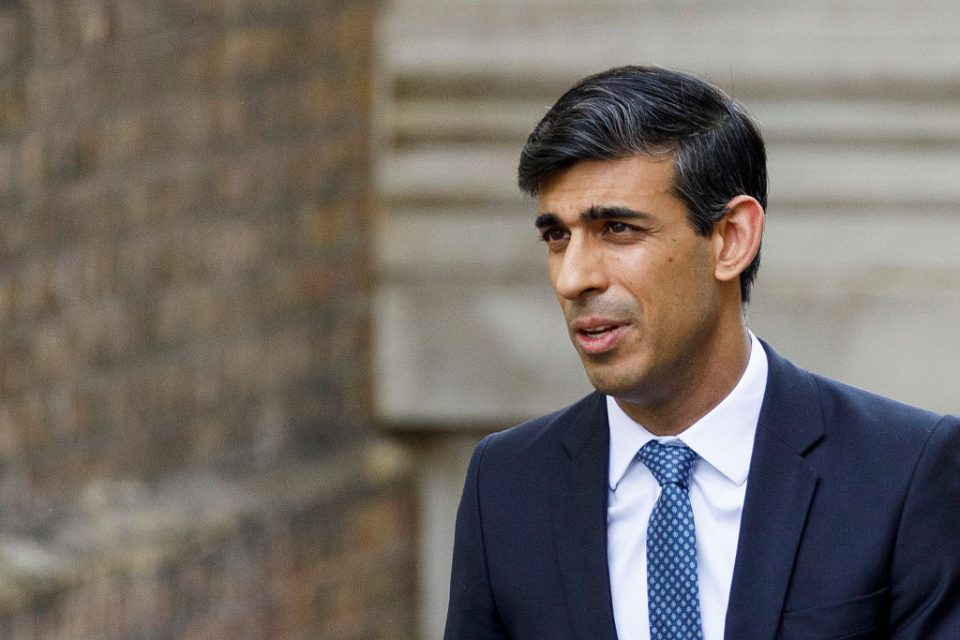Government borrowing hits record £62bn in April over coronavirus measures

UK government borrowing rose by a record £62.1bn in April alone as the government paid people’s wages and loaned businesses cash to survive the coronavirus lockdown, statistics showed today.
Coronavirus measures like the job retention scheme to pay people’s wages and coronavirus loans for businesses pushed UK borrowing to the all-time high last month.
The £62.1bn figure for April compared to £10.9bn in April 2019. And it almost matches the £62.5bn that UK borrowing totalled for the entirety of the previous year, April 2019 to March 2020, the Office for National Statistics (ONS) said.
A stark decline of over 25 per cent in government tax receipts also drove the borrowing as the UK economy shrank in response to lockdown. Relief measures and collapsing businesses meant falling government income did little to offset the huge amount of borrowing.
And ONS statisticians revised up March’s borrowing figures by £11.7bn to £14.7bn due to a slump in tax receipts from struggling businesses and National Insurance contributions from workers made redundant.
UK debt increases to 98 per cent of GDP

That left the UK’s debt pile with its largest ever increase of £118.4bn compared to April 2019, leaving debt at £1.9 trillion – or 97.7 per cent of GDP.
The figures came as retail sales slumped by a record amount in April, plunging 18.1 per cent during lockdown.
Clothing was particularly badly hit, with sales halving, while online sales made a record contribution of 30.7 per cent of overall shopping.
“The public finances suffered substantial deterioration in April as the government’s measures to support businesses and jobs from the impact of coronavirus on the economy started to feed through,” Howard Archer, chief economic adviser to the EY Item Club, said.
“Central government receipts fell 26.5 per cent year-on-year in April,” he added. “They were impacted by a combination of sharply contracting economic activity, markedly rising unemployment and weaker earnings, and companies being allowed to delay tax payments.”
Government income slumps as borrowing spikes
Samuel Tombs, chief UK economist at Pantheon Macroeconomics, added that the 26.5 per cent drop in tax receipts was due to a massive 43.6 per cent fall in VAT receipts.
And government spending rocketed by 56.6 per cent, down to the eye-watering costs of the job retention scheme, where the government pays 80 per cent of people’s wages. That cost the Treasury £5.2bn in April alone.
Tombs predicted the government will be forced to rely on a huge rise in the Bank of England’s quantitative easing as borrowing skyrockets.
“We still think that public borrowing will equal about 15 per cent of GDP this year – greatly exceeding the 10 per cent peak in the 2008-to-09 recession – even if a second virus wave is avoided,” he said. “Hefty gilt issuance, however, looks set to remain facilitated by the MPC, which we think will increase this year’s QE total to £300bn, from £200bn in June.
“Such purchases would keep the stock of gilts in private-sector hands unchanged this year and thus maintain record-low borrowing costs for the government.”
The government’s latest bond issuance saw it raise £3.8bn from investors in a sale so oversubscribed the interest rate turned negative.
April’s £62.1bn figure shows borrowing could beat estimates
Alex Tuckett, senior economist at PwC, warned “there should be no doubt over how dramatic this number is”.
The £62.1bn figure is the highest monthly number since the ONS started keeping records in 1993.
“The dramatic deterioration in public finances was driven both by a more than 25 per cent fall in tax receipts as the economy contracted in response to the Covid-19 crisis,” Tuckett added.
“Large monthly borrowing figures will continue until the economy recovers and some aspects of fiscal support can be scaled back.”
And Paul Dales, chief UK economist at Capital Economics, warned public borrowing could blow past the Office for Budget Responsibility’s estimate of £300bn this year.
He pointed to the plunge in retail sales and the huge government relief measures as reasons to expect government borrowing to get worse.
“With little prospect of a swift return this year towards pre-crisis levels of economic activity, we expect borrowing to total £340bn over 2020-21,” he said. That would amont to 17.5 per cent of GDP.
“Overall, the small easing of the lockdown on 13 May probably means that retail sales started to edge higher in May. The government might not have had to borrow quite as much as in April. But it’s very clear that the retail activity will remain worrying weak for some time yet and that the government will have to borrow a few hundred billion pounds this year.”